70 years of Chinese industry and aviation
Source:Global Times Published: 2019/9/25 17:48:40 Last Updated: 2019/9/25 23:14:25
A great leap to become the world’s largest manufacturer
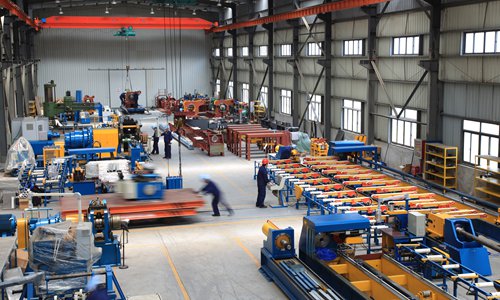
Workers busy at a factory in China Photo: VCG
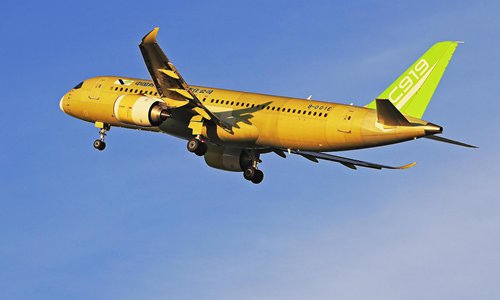
A fourth C919 plane had its first test flight in Shanghai in August. Photo: VCG
Summary:
70 years ago, China's industrial base was very weak due to years of warfare. Industry overall was lacking in equipment and technology, and only a small amount of roughly processed products could be produced. After 70 years of development, particularly since the beginning of its reform and opening-up, China's industry has achieved a historical leap, making China the world's largest industrial manufacturing country from a poor and lagging agricultural economy.
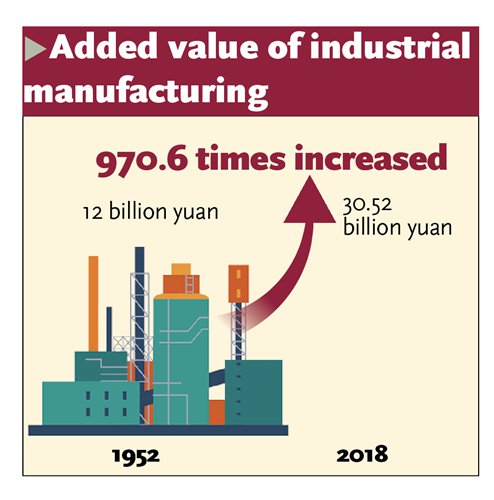
Graphics: GT
In the 70 years since the founding of the People's Republic of China (PRC), China's industry has made unprecedented progress. The added value of the industry increased from 12 billion yuan ($1.69 billion) in 1952 to 30.52 trillion yuan in 2018. This was up 970.6 times at constant price, with an average annual growth rate of 11 percent. During the first Five-Year Plan period (1949-57), China's industrial production grew rapidly. In the early days of the founding of the PRC, it took only three years to restore the national economy from the ruins of warfare. In the course of the first Five-Year Plan, China's industrial added value maintained an average annual growth rate of 19.8 percent.
After China's reform and opening-up, its industry has witnessed a tremendous increase in vitality, with its economic scale growing rapidly. In 1978, industrial added value was 162.2 billion yuan, an increase of 15.9 times from 1952, with an average annual growth rate of 11.5 percent. In 1992, China's industrial added value exceeded the 1 trillion yuan threshold. In 2007, volume broke the 10 trillion yuan record, and broke through the 20 trillion yuan bar in 2012. In 2018, the figure broke the 30 trillion yuan mark. Compared to 1978, the volume in 2018 represents a growth of 56.4 times, and the average annual growth rate reached 10.7 percent.
The international influence of China's industry has also undergone historic changes. According to statistics from the World Bank, based on the current value of the US dollar, the added value of China's manufacturing industry surpassed that of the US for the first time in 2010, making China the world's largest manufacturing country. Since then, it has maintained the top ranking. In 2017, China's manufacturing added value accounted for 27 percent of the world's overall value, becoming an important engine behind global industrial growth.
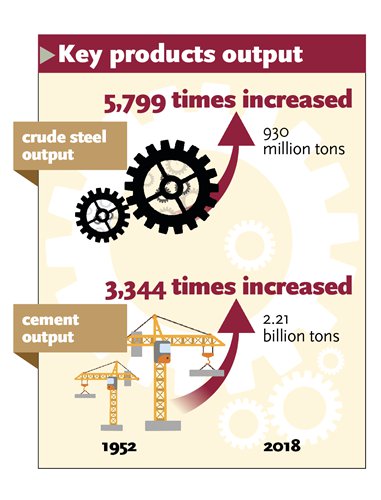
Graphics: GT
Upgraded industrial structure
Production capacity has also been drastically improved over the seventy years. "China has become the only country in the world that has all the industries listed in the United Nations industry classification system," Liu Jianying, an associate research fellow at the Chinese Academy of International Trade and Economic Cooperation of the Ministry of Commerce (MOFCOM), told the Global Times.
At the beginning of the PRC, China could only produce a few daily consumer goods such as cloth, matches, soap and flour. After 70 years of rapid development since reform and opening-up, China's industrial production capacity has grown to include major industrial products. Raw-materials production in industries such as raw coal, steel, building materials and chemistry have come to huge capacities. In 2018, the output of raw coal was 3.68 billion tons, 115 times higher than in 1949. The output of crude steel in 2018 was 930 million tons, an increase of 5,799 times compared to 1949. The output of cement also increased 3,344 times from 1949 to reach 2.21 billion tons in 2018.
After 70 years of development, with some industrial sectors such as steel, coal, petroleum processing, chemistry and machinery have risen to considerable volume, and new industrial sectors such as the aerospace industry, automobile industry, and electronic communication industry have also developed rapidly from nothing.
Mostly notably among rising industries is that of high-tech products. Manufacturing for this industry began late but has been developing rapidly. In 2018, the number of mobile phones produced in China reached 1.8 billion, and the number of computers and color-television produced also rose to 310 million and 190 million. Automobile production hit 27.82 million cars in 2018, its highest volume.
"China has built the largest information and communication network in the world and its per capita information infrastructure is more advanced than the world average," Liu said. "China's industrialization and information technology have been deeply integrated, and significant progress has been made in the development of intelligent manufacturing."
China has kept pace with the rest of the world in the construction of new infrastructure such as 5G, industrial internet and artificial intelligence. Internet and information communication are becoming a new information Silk Road connecting China and foreign countries after traditional paths through land, sea and air, Liu told the Global Times.
Civil aviation industry
There are 235 licensed civil aviation airports in China, according to the Minister of Transport Li Xiaopeng. 37 of those airports serve 10 million passengers annually, and the regular routes in 2018 reached 4,985, 412.1 times than that in 1950.
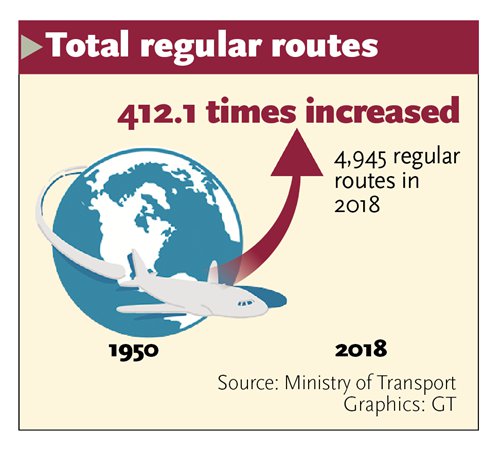
Graphics: GT
By the end of 2018, there were 60 transport airlines in China, which were divided by different ownerships. 45 are state-owned and 15 are privately owned. The diversification of the market has effectively promoted the development of air transportation and continuously meets the needs of the masses, according to a report by yicai.com.
In the aviation industry today, market-oriented competition has not only been confined to the domestic market, but has also expanded to the world. As of the end of 2018, there were 849 international routes in China, and international scheduled flights to 165 cities in 65 countries were open. In contrast, on July 1 in 1950, the civil aviation company jointly established by China and the then-Soviet Union opened only three international routes flying among several Chinese cities and the Soviet Union, as well as Mongolia, according to the report by yicai.com.
Chinese airlines have opened 95 international routes in 43 countries along the China-proposed Belt and Road Initiative. Chinese companies have a 58 percent share of total transport volume on routes between China and the US, and 62 percent of the volume on China-Europe routes. The Chinese civil aviation industry is also actively welcoming more foreign companies into local competition. Currently, there are 135 foreign airlines operating 814 international routes from 138 overseas cities outside China to 56 cities in China, including 573 passenger air routes and 241 cargo air routes.
Notably, China's homemade C919 large passenger plane project, which aims to rival Airbus and Boeing, is also making steady progress. In August this year, a fourth C919 had its first test flight in Shanghai, and two further aircraft will follow in the second half of this year, showing it has truly entered the test flying stage. The C919 project began in 2008, and exited the assembly line in 2015; its maiden flight was in 2017.
To date, the Commercial Aircraft Corporation of China Ltd has received 815 orders for the C919 from 28 customers worldwide.